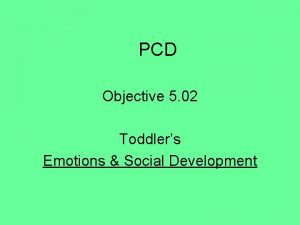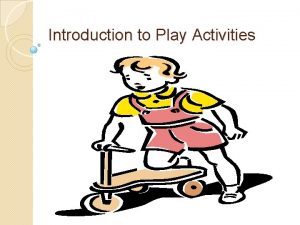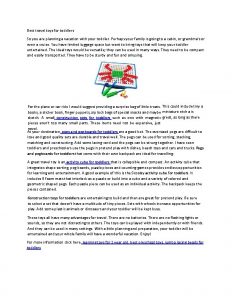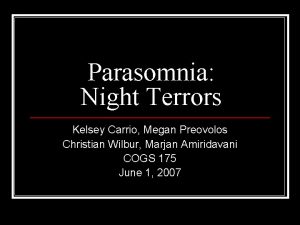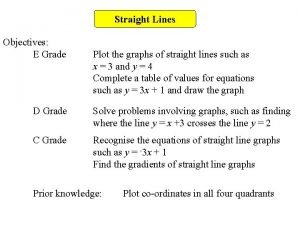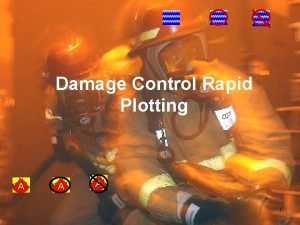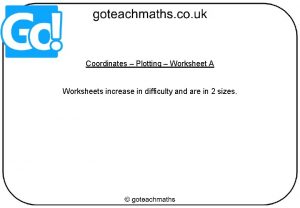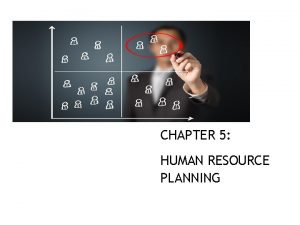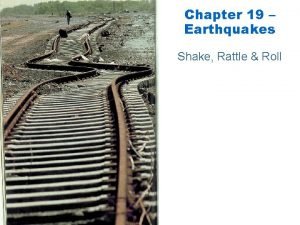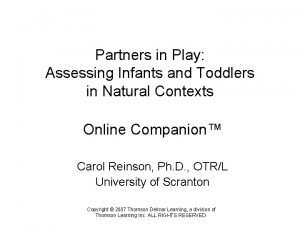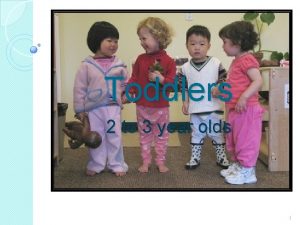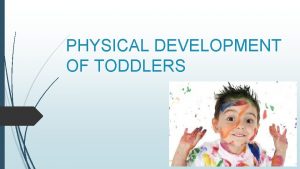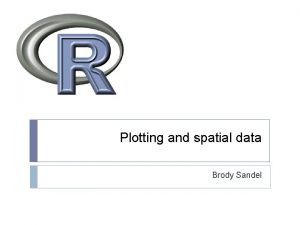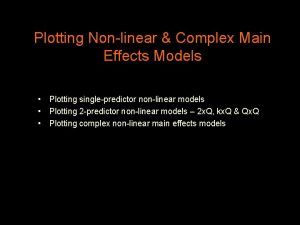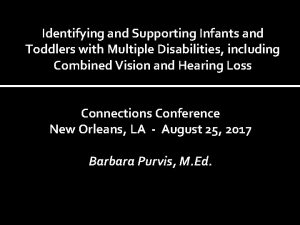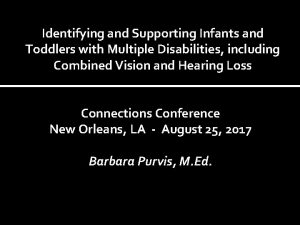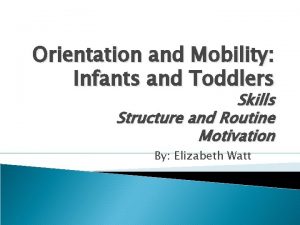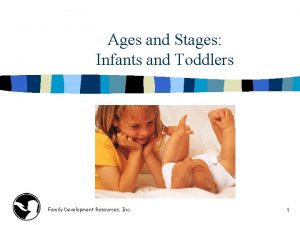Infants and toddlers Plotting and Assessing Infants and















- Slides: 15

Infants and toddlers Plotting and Assessing Infants and Toddlers up to age of 4 Presentation 5 Adapted from training materials of the Royal College of Paediatrics and Child Health [RCPCH] 1

Infants and toddlers When to weigh? • After the first week and once feeding is established babies usually need to be weighed only when seen for routine health checks, unless there is a concern: – birth, 6 -8 weeks, and school entry (including measuring BMI). – opportunistic times include: immunisations and surveillance checks 2

Infants and toddlers What is a normal rate of weight gain? • Weight usually tracks within one centile • Acute illness fall weight loss and weight centile – A child’s weight usually returns to its normal centile within 2 to 3 weeks. • Less than 2% of infants will show a sustained drop through two or more weight centile spaces on the new WHO charts – These children should be assessed by the primary care team, including measuring length/height 3

Infants and toddlers Length measurements commonly show wide variation Measured length will vary in same child depending on mood of child and style of measurer 4

Infants and toddlers Length & Height Changes at 2 years When a child is measured standing up, the spine is squashed a little so the child may appear shorter. The UK/WHO charts shift down slightly to account for this when measuring height standing for the first time 5

Infants and toddlers What is a normal rate of growth? • Measure length or height whenever concerned about weight gain or growth • Measurements commonly show wide variation – If worried measure on a few occasions – Healthy children usually show a stable general pattern over time • What is a normal rate of head growth? – Head circumference usually tracks within one centile space – Fewer than 1% of infants drop or rise through >2 centile spaces after the first few weeks Should be carefully expressed 6

Infants and toddlers Adult height prediction • Plot the most recent height • Find the corresponding centile on the adult scale For example, if a child is on the 75 th centile for height, the Adult Height Predictor suggests they may reach an Adult Height of 181 cm +/- 6 cm • Four out of he five children will be within 6 cm of this value when an adult 7

Infants and toddlers When should a single measurement trigger assessment? • There is no single threshold below or above which a child’s weight or height is defiantly abnormal • Further assess… – All children with measurements below 0. 4 th centile – Child with height above 99. 6 th centile plus other concerns • If weight is above 99. 6 th centile after age 2, lookup BMI centile 8

Infants and toddlers Body Mass Index (BMI) lookup • • • Read off the weight and height centiles from the growth chart. Plot the weight centile (left axis) against the height centile (bottom axis) Read off the corresponding BMI centile from the slanting lines Record centile with date in the data box Accurate to ¼ centile space 9

Infants and toddlers Interpreting Body Mass Index (BMI) • A child whose weight is average for their height will have a BMI between the 25 th and 75 th centiles – Whatever their height centile • BMI above the 91 st centile suggests that the child is overweight • BMI above the 98 th centile is very overweight (clinically obese) • BMI below the 2 nd centile is unusual and may reflect under-nutrition 10

Infants and toddlers Body Mass Index (BMI) • BMI indicates how heavy a child is relative to their height • BMI = weight (kg) ÷ height (m)2 11

Infants and toddlers Summary • After first 2 weeks, if well, weights required only at time of routine reviews • Measure length or height and head whenever concerned about weight gain, growth or development • Any child with measurement consistently <0. 4 th centile should be assessed in more detail • Adult height can be predicted from age two using recent height centile using height predictor • If weight is above 99. 6 th centile, BMI should be calculated using BMI lookup from 2 years 12

Infants and toddlers 13

Infants and toddlers 14

Infants and toddlers 15
 Creative curriculum intentional teaching cards
Creative curriculum intentional teaching cards Goals of socialization
Goals of socialization Stages of play development
Stages of play development Amebiasis
Amebiasis Milk for toddlers with milk allergynon dairy
Milk for toddlers with milk allergynon dairy Best travel toys for toddlers
Best travel toys for toddlers Night terror vs nightmare
Night terror vs nightmare Toddler temperature
Toddler temperature Negativism in toddlers
Negativism in toddlers Plotting straight line graphs tes
Plotting straight line graphs tes Radar plotting
Radar plotting Radar plotting
Radar plotting Navy dc plotting
Navy dc plotting Plotting coordinates worksheets
Plotting coordinates worksheets Unit forecasting in hrm
Unit forecasting in hrm The locations of seismic belts are determined by plotting
The locations of seismic belts are determined by plotting

